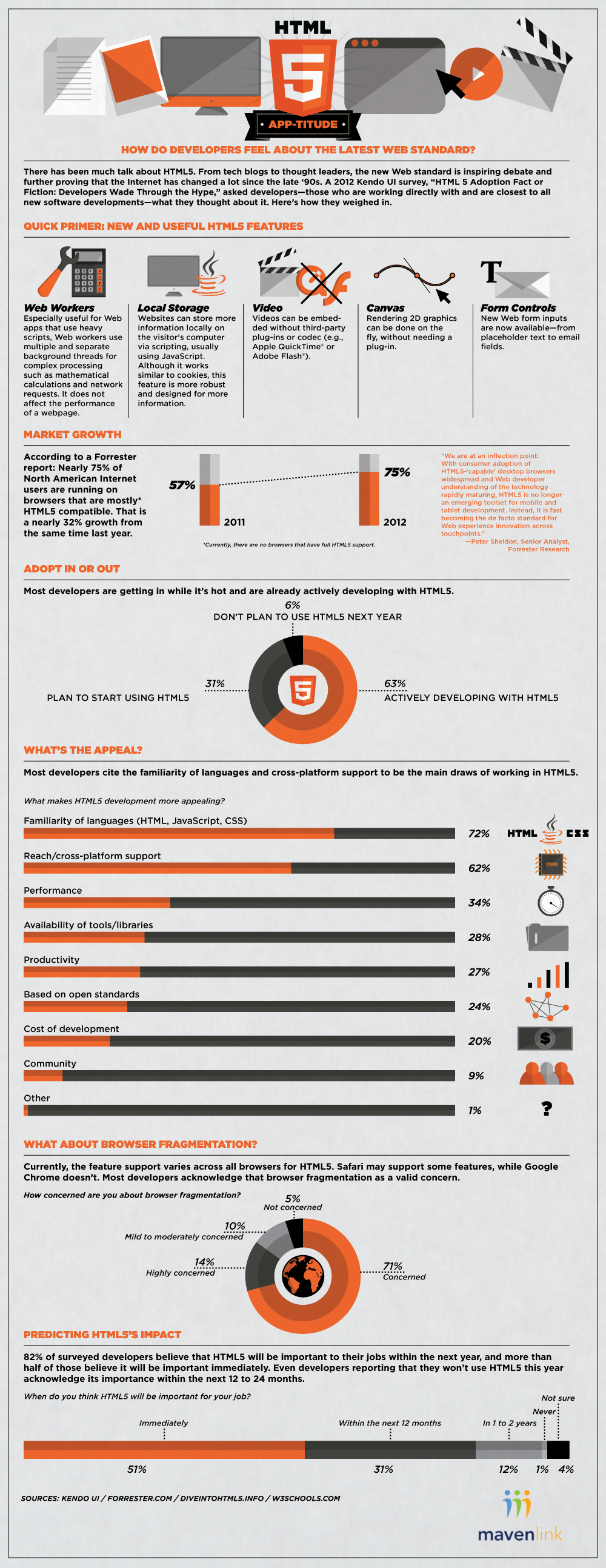What does 2013 hold for the future of HTML5? If predictions by industry analysts are correct, mobile will be its calling card. And rightly so -- HTML5 has the power to help smartphones, feature phones, tablets, notebooks, desktop PCs, televisions and vehicles come together through cloud services.
HTLM5 or Bust?
In a recent report, Strategy Analytics predicted that globally HTML5 phone sales will surge from 336 million units in 2011 to 1 billion units in 2013, spurred by demand from multiple hardware vendors and software developers looking for a way to develop rich media services across multiple platforms. If this sounds too good to be true, it just may be.
Don’t get us wrong, it’s not as if HTML5 isn’t real and doesn't have great potential -- it is and it does. It’s just that HTML5 isn't without issues. To help us better understand the usefulness and the issues associated with HTML5, the folks at Mavenlink created an infographic.

HTML5 App-Titude: How Do Developers Feel About the Latest Web Standard?
To be fair, Mavenlink is a fan of HTML5, even building an HTML5 mobile application to help its users collaborate, manage tasks, view files and track time and expenses from their iOS, Android, Windows Phone and other smartphones without needing to install apps or software. But Mavenlink was curious about what the developers think of HTML5 -- considering that they're the ones who will be building the apps.
What is most telling is that developers, like it or not, are expecting HTML5 to take flight in the coming year, while citing that its growth will be determined not by cost efficiency or even community, but rather by its ability to perform across platforms.
